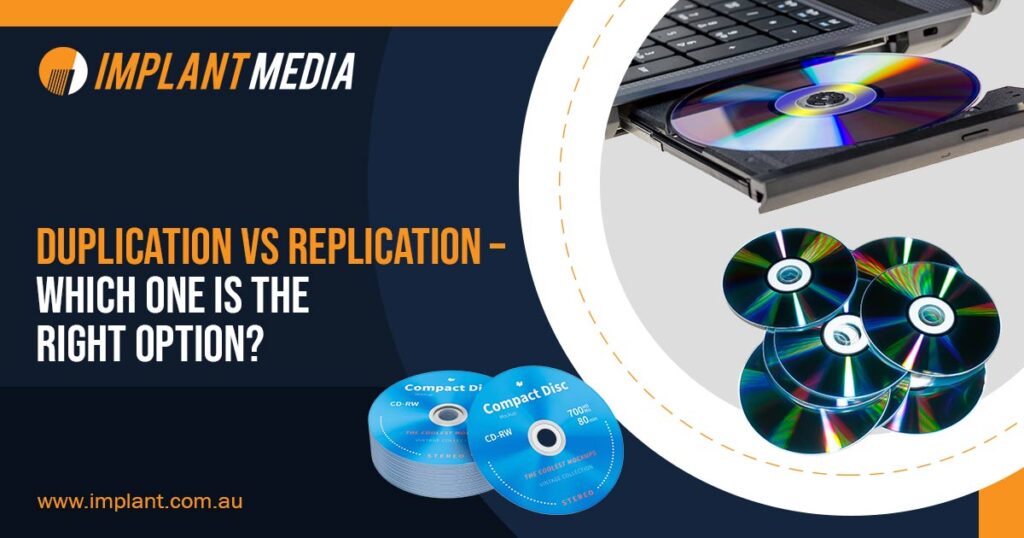CD Duplication
At its most basic, duplication is the burning of optical media. Blank CD-R’s, DVD-R, or Blu-Ray-25-R are burnt using duplication towers using CD-Burners to transfer the data on to the media. A master disc is used and copies of that are made through the burning process. The media can then either be printed. There are a few different ways the media can then be printed but at Implant we offer 3, direct to disc inkjet, Black Thermal Film and in special circumstances, we can screen-print the discs. The method used will depend greatly on your artwork, but the vast majority of discs are direct to disc inkjet printed as this produces vibrate colourful discs with the easiest to set up artwork.CD Replication
The replication process involves moulding disc with data rather than burning them. A plastic polymer is injected moulded with a polycarbonate that is stamped with a glass master that has been created in the master process to transfer the data onto the media. These discs can then be printed either through screen-printing or offset printing. The completed process is quite complex and more information on it can be found here
Each process has its advantages and disadvantages – but the right one to chose really comes down to how many units you need and how much time you have for your project. At Implant duplication is available from 10 units to 500 units, and replication is only available form 500 units. This is because of the cost involved in the setup for replication it does not become economically viable to offer them a lower volume. But once these setup costs have been recouped after the 500 units and because the replication process is faster per discs than the duplicated process amount over this the replicated discs are much more economical to produce and that’s why if you want larger runs of media we would normally recommend replication. The lead time is the other deciding factor that needs to be taken into consideration. The industry standard lead time for duplication is 2-3 days while the lead time for replication is 7-10 working days. This is the same for Implant Media but under the right circumstances, we can produce duplication CD and DVD media the same days as artwork and masters are supplied. There are a few other factors that can come into play, such as the print process differing from each other and the range of packaging available for either option but this is secondary to lead time and cost. In Summary Duplication for runs under 500 units or for media runs that you need in a hurry. Replication for runs 500 and over when you have enough time to produce them this way (7-10 days) The most important thing you can do is call Implant Media for your next project and talk to one of our experts, we have the right solutions so that we can get the most out of your budgets time frames and needs to get the best Duplication and Replication projects in Australia.


